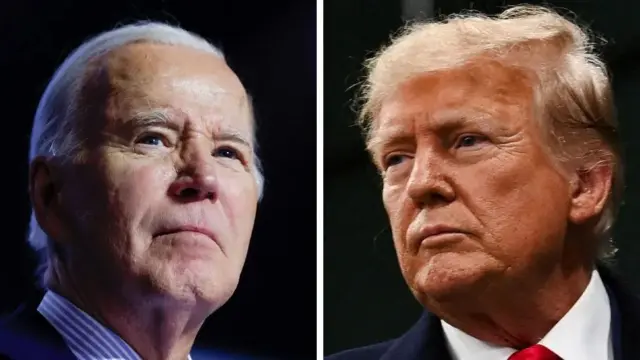Presidential elections in the United States are closely watched by market participants, as changes in leadership can alter economic policies, regulations, and market sentiment. Understanding how these political events influence the financial landscape is crucial for investors and analysts.
The outcomes of these elections have the potential to either stabilize or disrupt the financial markets. By examining historical trends and current events, one can gain insight into the ways political leadership impacts market behavior. Let’s dive into the multifaceted effects of presidential elections on the American financial markets.
Market volatility during election cycles

The anticipation of election results often leads to significant market volatility. Investors generally exhibit a “wait-and-see” attitude, causing fluctuations in stock prices. The uncertainty about future policies results in unpredictable market behaviors, and financial advisors typically recommend caution during these periods.
Historical data suggest that market volatility tends to peak in the months leading up to an election. Traders, influenced by polls and political debates, may engage in short-term trading strategies to capitalize on market swings. This environment can create both opportunities and risks for market participants.
It’s important to note that not all market sectors respond uniformly. For instance, sectors such as healthcare and energy may react strongly based on the anticipated regulatory changes, whereas consumer staples might remain relatively stable.
Immediate reactions post-election
Once the election results are in, the financial markets often experience immediate reactions. If the outcome aligns with the market’s expectations, there might be a relief rally. Conversely, a surprise result can lead to sell-offs and heightened volatility as investors re-evaluate their portfolios.
For example, the election of a president with a pro-business stance may boost investor confidence, driving up stock prices. On the other hand, policies perceived as unfriendly to business or tax hikes might result in negative market reactions.
It’s essential for investors to keep an eye on initial policy announcements and economic plans proposed by the newly elected administration. These initial signals can provide insights into the future direction of the market.
Long-term market trends
While immediate reactions are important, the long-term impact of a presidential election on financial markets can be even more significant. The administration’s economic policies and regulatory frameworks shape the investment landscape over the following years.
Fiscal policies, such as government spending and tax reform, play a vital role in economic growth and market performance. Additionally, international trade policies and foreign relations can affect global market dynamics and investor sentiment.
Historical patterns show that different administrations have varying degrees of influence on market sectors. For example, defense stocks may perform well under a government that prioritizes military spending, whereas renewable energy stocks might thrive under an administration focused on green policies.
Investor strategies during election years
Investors often adopt specific strategies during election years to mitigate risks and capitalize on opportunities. Diversification remains a core principle, as it helps spread risk across various asset classes and sectors.
Some investors prefer to shift their focus to more conservative investments, such as bonds, to hedge against potential market turbulence. Meanwhile, others might look for growth opportunities in sectors likely to benefit from the incoming administration’s policies.
Additionally, staying informed about political developments and understanding their potential market implications can provide a competitive edge. Regularly reviewing and adjusting portfolios in response to changing political landscapes is a prudent approach during these volatile periods.
Sector-specific strategies
Different sectors react differently to election outcomes. For example, an administration favoring deregulation might bolster financial and industrial stocks, while sectors dependent on government support might face volatility.
Healthcare is another sector influenced by elections, particularly in the context of healthcare reform. Investors should monitor policy proposals and legislative changes impacting this sector, as these can lead to significant market movements.
Technology and renewable energy sectors also demand attention, as government investment and regulatory support can drive growth. Identifying sectors aligned with the new administration’s priorities can position investors for success.
Global market considerations
U.S. presidential elections also have international implications, affecting global financial markets. A change in leadership can shift foreign policies, trade agreements, and diplomatic relations, influencing international investor sentiment.
For instance, stricter trade policies might impact global supply chains and multinational corporations, leading to market fluctuations beyond U.S. borders. Conversely, policies promoting international trade and cooperation can positively affect global markets.
Investors with international portfolios should keep an eye on how U.S. political changes might affect global economic conditions. Maintaining a balanced and diversified portfolio with exposure to various regions can help manage risks associated with international market reactions.



